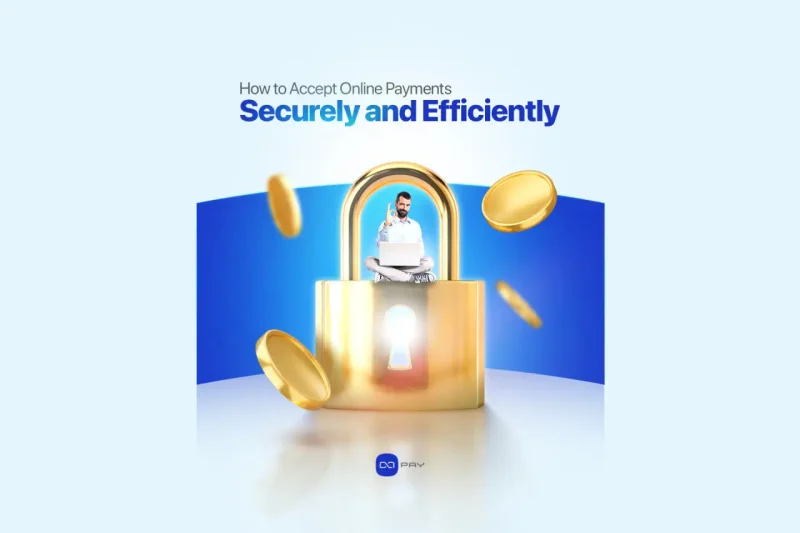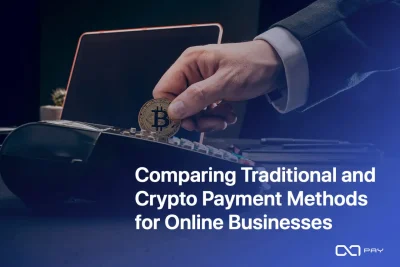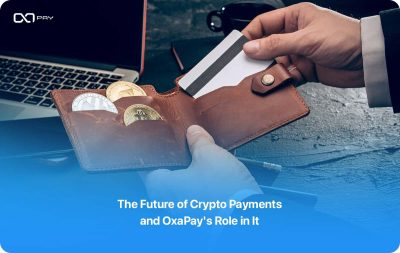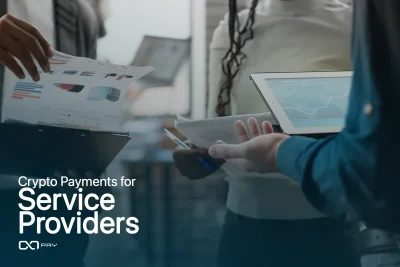L'acceptation des paiements en ligne est le point de rencontre entre la confiance et les revenus. Si le processus de paiement échoue, que ce soit à cause de frais cachés, de difficultés d'utilisation ou d'une sécurité insuffisante, l'impact est immédiat : perte de clients et stagnation de la croissance. C'est pourquoi la mise en place d'un système d'acceptation des paiements en ligne non seulement fonctionnel, mais aussi sécurisé et évolutif, est devenue une priorité absolue pour les entreprises en ligne.
Ce guide s'adresse aux chefs d'entreprise, aux gestionnaires et aux développeurs qui recherchent des conseils concrets et précis. Nous privilégions les principes pratiques, la sécurité, l'efficacité, la transparence, l'évolutivité et l'intégration, et montrons comment les appliquer aux principaux moyens de paiement. Nous démontrerons ensuite comment les solutions modernes, notamment paiements cryptographiques avec OxaPay, peuvent mettre ces principes en pratique.
Principes fondamentaux pour l'acceptation des paiements en ligne
Que vous acceptiez les paiements par carte bancaire, portefeuilles numériques, virements bancaires, BNPL (Buy Now, Pay Later) ou cryptomonnaie, tout système performant repose sur six piliers. Chaque principe ci-dessous comprend un liste de contrôle succincte, indicateurs clés de performance mesurables et erreurs courantes Vous pouvez ainsi passer de la théorie à la pratique.
Sécurité des paiements (SSL/TLS, PCI DSS, MFA, HMAC)
Pourquoi c'est important :
Une seule faille de sécurité, qu'il s'agisse de données de cartes volées, de webhooks falsifiés ou de connexions frauduleuses, ne cause pas seulement des dommages techniques. Elle détruit également la confiance des clients et expose votre entreprise à des amendes réglementaires.
Liste des actions à effectuer :
- Imposer TLS 1.2+ avec HSTS et désactiver les chiffrements faibles.
- Restez à l'intérieur PCI DSS portée (minimiser l'exposition en utilisant la tokenisation ou des pages hébergées).
- Exiger L'authentification multifacteur (MFA) est requise pour tous les comptes d'administrateur.; restreindre les connexions à l'aide de listes blanches d'adresses IP.
- Utiliser Webhooks signés HMAC avec validation de l'horodatage et traitement idempotent.
- Appliquer Limitation du débit et WAF règles contre bourrage de diplômes et des analyses automatisées.
- Mettre en œuvre centralisé, journalisation inviolable et la surveillance en temps réel
Indicateurs clés de performance (KPI) :
- Le taux de rétrofacturation ou de fraude devrait diminuer avec le temps, ce qui indique une sécurité renforcée.
- Le nombre de rejets de signatures de webhook invalides devrait rester proche de zéro ; sinon, cela signifie que la vérification ne fonctionne pas.
- Le délai moyen de correction des failles de sécurité critiques doit être inférieur à 72 heures, car les retards augmentent les risques pour l'entreprise.
Erreurs courantes :
- Accepter les webhooks sans vérification de signature ou d'horodatage est dangereux, car cela permet aux attaquants d'usurper les requêtes.
- Stocker les numéros PAN ou CVV dans des bases de données brutes est risqué, car cela expose directement des données sensibles.
- Activer l'authentification multifacteur uniquement pour une partie de l'équipe est insuffisant, car un seul compte faible peut compromettre le système.
Efficacité et expérience utilisateur (Paiement simplifié, Paiements rapides)
Pourquoi c'est important:
Chaque étape supplémentaire lors du passage en caisse lorsque vous acceptez les paiements en ligne augmente le coût. abandon de chariot. Les clients s'attendent à de la rapidité et de la simplicité, surtout sur mobile.
Liste des actions à effectuer :
- Offre départ invité; n'encouragez la création de compte qu'après paiement.
- Réduisez au minimum le nombre de champs du formulaire (courriel, pays et adresse uniquement lorsque cela est nécessaire).
- Utiliser grands boutons de paiement adaptés aux mobiles avec une forte concentration visuelle.
- Soutien méthodes de paiement express (Apple Pay, Google Pay, portefeuilles).
- Fournir retour d'information en temps réel (barres de progression, validation de champ en ligne, statut de paiement instantané).
- Conserver les sessions afin que les données du panier soient conservées en cas d'actualisation ou d'erreurs de navigation.
Indicateurs clés de performance (KPI) :
- Taux de conversion au moment du paiement La situation devrait s'améliorer progressivement, car un flux plus fluide réduit l'abandon des paniers.
- Le temps moyen de traitement d'un paiement doit rester inférieur à 10 secondes, faute de quoi les utilisateurs risquent d'abandonner le processus.
- Le taux d'abandon par champ/étape doit être suivi attentivement afin que les tests A/B puissent mettre en évidence les points de friction.
Erreurs courantes :
- Les formulaires longs ou obligatoires frustrent souvent les utilisateurs, ce qui augmente les taux d'abandon.
- Les pages de paiement lentes se retrouvent surchargées de scripts, ce qui entraîne des retards inutiles pour les clients.
- Les messages d'erreur vagues sèment la confusion chez les acheteurs et, par conséquent, diminuent la confiance dans le processus de paiement.
Gestion des coûts et transparence des frais
Pourquoi c'est important :
Lorsque les entreprises acceptent les paiements en ligne, les frais cachés ou imprévisibles peuvent rapidement miner la confiance et réduire leurs marges bénéficiaires. La transparence est bénéfique à la fois pour vos négociations avec les fournisseurs et pour l'expérience client.
Liste des actions à effectuer :
- Afficher tous les frais : transaction, Change, remboursements, frais de retrait et de réseau (pour la blockchain).
- Afficher coût total à l'avance au moment du paiement (taxes, frais de port, frais).
- Négocier Garantie SLA plafonds de frais avec les fournisseurs afin d'éviter les pics inattendus.
- Suivre et signaler coûts de paiement mensuels en tant que % de ventes.
Indicateurs clés de performance (KPI) :
- Les frais effectifs % doivent rester aussi bas que possible, car la hausse des coûts érode rapidement les marges.
- Le taux de litiges/plaintes doit rester minimal, car les frais imprévus nuisent directement à la confiance des clients.
- Il convient de surveiller de près les écarts entre les honoraires contractuels et les honoraires réels, afin de garantir la transparence de la facturation.
Erreurs courantes :
- Négliger les frais de change et de règlement dans les ventes transfrontalières est risqué, car ces coûts cachés peuvent réduire la rentabilité.
- Le fait de ne révéler les frais qu'à la dernière étape frustre les clients et conduit donc souvent à l'abandon du panier.
Conformité réglementaire (RGPD, LCB-FT, KYC)
Pourquoi c'est important :
La conformité ne se limite pas à une simple formalité légale. Les clients s'attendent à ce que leurs données et transactions soient traitées avec intégrité lorsqu'ils effectuent des paiements en ligne. Les autorités de réglementation imposent de lourdes sanctions en cas d'infraction.
Liste des actions à effectuer :
- Suivre RGPD/Confidentialité: ne collecter que les données nécessaires, informer les utilisateurs, permettre les demandes de suppression/exportation.
- Restez à l'intérieur Étendue du PCI DSS pour les paiements par carte.
- Mettre en œuvre Lutte contre le blanchiment d'argent/KYC politiques le cas échéant (définir les seuils de contrôle).
- Automatiser politiques de conservation et de suppression des données.
Indicateurs clés de performance (KPI) :
- Le taux de TP4T des demandes de données traitées dans les délais du SLA doit rester élevé, car les retards nuisent à la crédibilité en matière de conformité.
- Les conclusions de l'audit devraient faire état d'une diminution des incidents, ce qui signifie que l'entreprise améliore sa conformité.
- Le taux de précision des contrôles LCB-FT doit trouver un équilibre entre les faux positifs et les faux négatifs, afin que les utilisateurs légitimes ne soient pas bloqués.
Erreurs courantes :
- La collecte de données inutiles lors du passage en caisse est problématique, car elle augmente à la fois les risques et l'exposition réglementaire.
- Ne pas tenir de registres de consentement pour les audits est dangereux, car cela empêche de prouver la conformité lorsque cela est requis.
- Considérer la conformité comme un effort ponctuel est trompeur, car la réglementation exige une surveillance continue.
Évolutivité pour un volume de transactions élevé
Pourquoi c'est important :
Les systèmes de paiement sont souvent sujets à des défaillances lors des pics d'activité (campagnes commerciales, affluence pendant les fêtes). La mise à l'échelle repose autant sur la résilience que sur la capacité.
Liste des actions à effectuer :
- Conception opérations idempotentes (commandes, paiements, factures).
- Utiliser files d'attente et interruption exponentielle pour les nouvelles tentatives d'événements.
- Mettre en œuvre disjoncteurs et les bilans de santé.
- Soutien mise à l'échelle horizontale avec des services modulaires.
- Maintenir complet observabilité avec des indicateurs, le traçage et des alertes d'erreur.
Indicateurs clés de performance (KPI) :
- Le débit (transactions par seconde) doit rester élevé aux heures de pointe, car les baisses affectent directement les revenus.
- La disponibilité (temps de fonctionnement %) et les taux d'erreur (5xx) doivent être surveillés de près, car ils reflètent la fiabilité globale du système.
- MTTR (le temps moyen de rétablissement après les incidents) doit être minimisé afin que les perturbations aient un impact limité sur l'activité.
Erreurs courantes :
- Partir du principe que les webhooks n'arriveront qu'une seule fois est une erreur, car des événements en double peuvent facilement se produire dans les systèmes du monde réel.
- Lier étroitement le processus de paiement aux services back-end sans redondance est risqué, car une seule panne peut paralyser l'ensemble du flux de paiement.
Intégration facile avec les plateformes existantes
Pourquoi c'est important :
Même le système le plus sécurisé ou le plus évolutif pour accepter les paiements en ligne est inutile s'il faut des mois pour l'intégrer ou s'il perturbe les flux de travail existants.
Liste des actions à effectuer :
- Commencer par options low-code/no-code (liens de paiement, paiement hébergé).
- Utiliser SDK et documentation mise à jour avec des environnements de test.
- Mettre en œuvre Webhooks avec tentatives de nouvelle connexion et charges utiles signées.
- Veillez à découpler la logique de paiement des systèmes de commande/comptabilité.
- Ajouter des tests de contrat pour les intégrations d'API dans CI/CD.
Indicateurs clés de performance (KPI) :
- Le délai entre la configuration et la première transaction réussie doit être réduit au minimum, car un processus d'intégration long ralentit l'adoption par l'entreprise.
- Les taux d'erreurs d'intégration (dépassements de délai, échecs de signature) doivent rester faibles, car ils ont un impact direct sur la fiabilité.
- Les coûts de maintenance (heures de développement par mois) devraient être réduits afin que les équipes puissent se concentrer sur la croissance plutôt que sur des corrections constantes.
Erreurs courantes :
- Passer directement à une intégration entièrement personnalisée sans tester des options plus simples est inefficace, car cela conduit souvent à une perte de temps et à des erreurs.
- Ignorer le versionnage des API est dangereux, car cela peut rompre la compatibilité lors des mises à jour et perturber les opérations.
✅ Ces six principes – sécurité, efficacité, maîtrise des coûts, conformité, évolutivité et intégration aisée – constituent le socle de tout système de paiement en ligne. Dans les sections suivantes, nous les appliquerons à cinq modes de paiement majeurs (cartes, portefeuilles numériques, virements bancaires, paiement fractionné et cryptomonnaies), en montrant comment les mettre en œuvre et en évaluer les performances.
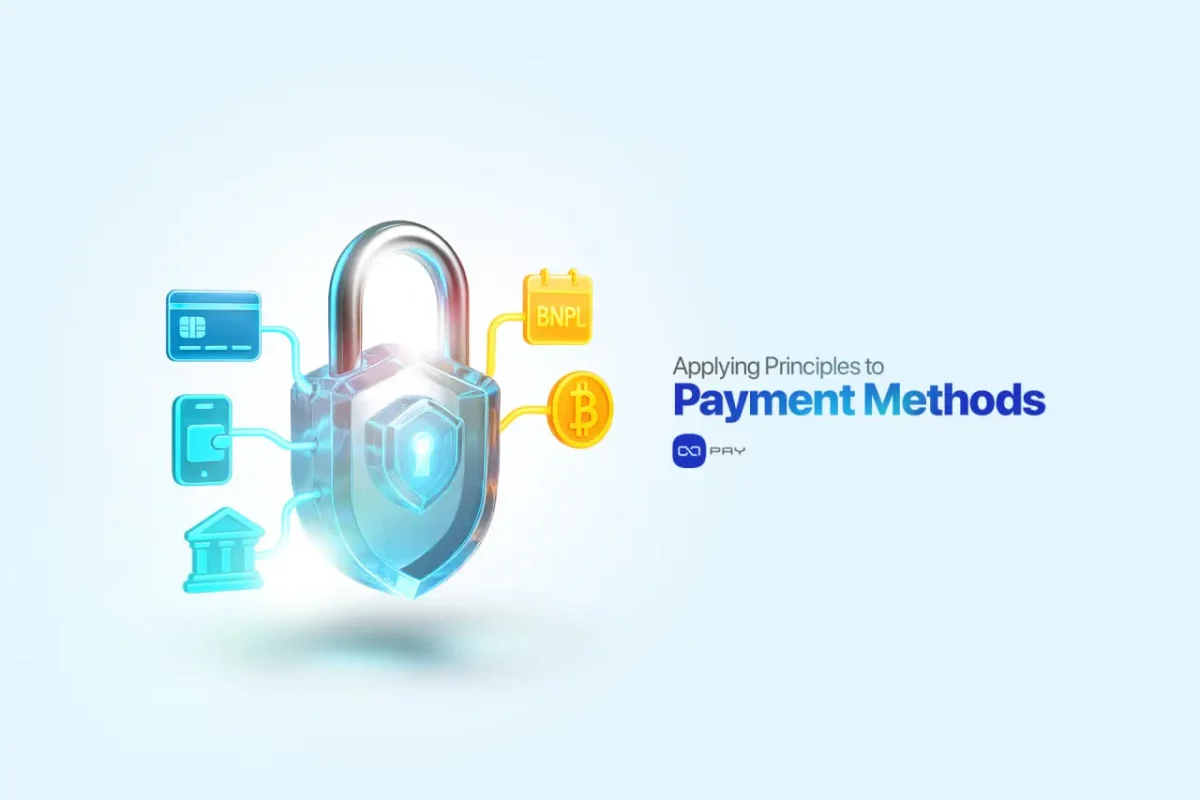
Application des principes fondamentaux aux principaux modes de paiement
Chaque entreprise possède des segments de clientèle et des modèles opérationnels différents, ce qui implique que le choix des modes de paiement doit être mûrement réfléchi. Dans cette section, nous appliquerons les six principes fondamentaux (sécurité, efficacité, maîtrise des coûts, conformité, évolutivité et facilité d'intégration) aux cinq modes de paiement les plus utilisés dans le commerce en ligne : cartes de crédit/débit, portefeuilles numériques, virements bancaires, paiement fractionné et paiements en cryptomonnaie.
Paiements par carte de crédit et de débit
Les cartes de crédit et de débit restent l'épine dorsale du commerce électronique mondial, et les entreprises qui acceptent les paiements en ligne doivent presque toujours prendre en charge Visa, Mastercard ou les réseaux de cartes locaux pour assurer la conversion.
Sécurité:
- Mettre en œuvre Conforme à la norme PCI DSS passerelles et tokenisation des données sensibles des titulaires de cartes.
- Utilisez 3D Secure 2.0 (3DS2) pour l'authentification, en équilibrant la prévention de la fraude et l'expérience utilisateur.
Efficacité et expérience utilisateur:
- Activez les paiements en un clic en stockant les jetons en toute sécurité.
- Proposer des solutions de nouvelle tentative en cas d'échec de paiement dû à des fonds insuffisants ou à des problèmes d'authentification.
Gestion des coûts:
- Prévoyez des frais de 2 à 5% selon le fournisseur. Comparez les frais mixtes aux modèles d'interchange.
- Négociez les tarifs pour des volumes de transactions plus élevés.
Conformité:
- La directive PSD2 en Europe exige une authentification forte du client (SCA).
- Conserver des pistes d'audit pour les litiges et les remboursements.
Évolutivité:
- Utilisez des passerelles de paiement capables de supporter des volumes de transactions élevés pendant les soldes ou les promotions.
- Assurez-vous de disposer de relations d'acquisition redondantes afin de réduire les risques d'indisponibilité.
Intégration:
- La plupart des passerelles de paiement proposent des plugins pour Shopify, WooCommerce et Magento.
- Les développeurs doivent valider toutes les réponses et tous les codes d'erreur de l'API afin d'éviter les défaillances silencieuses.
Portefeuilles numériques (PayPal, Apple Pay, Google Pay)
portefeuilles numériques ont connu une croissance rapide en tant que moyen privilégié d'accepter les paiements en ligne, sous l'impulsion de comportement axé sur le mobile et la confiance que les consommateurs accordent déjà à ces marques.
Sécurité:
- Les fournisseurs de portefeuilles électroniques utilisent la tokenisation et l'authentification biométrique, réduisant ainsi les risques de fraude.
- Néanmoins, il est recommandé de valider les transactions par des appels serveur à serveur afin d'empêcher toute usurpation d'identité.
Efficacité et expérience utilisateur:
- Le processus de paiement se réduit à un ou deux clics sur les appareils mobiles.
- Idéal pour les achats impulsifs et les renouvellements d'abonnements.
Gestion des coûts:
- PayPal Le tarif est généralement d'environ 2,91 TP4T, plus des frais fixes. Les frais d'Apple Pay et de Google Pay sont inférieurs, mais dépendent des accords conclus avec les acquéreurs.
- Pour les opérations à l'échelle mondiale, il convient de comparer les coûts à l'augmentation des taux de conversion.
Conformité:
- Les fournisseurs prennent en charge la plupart des contraintes réglementaires, mais les commerçants doivent tout de même respecter les lois sur la protection des données.
Évolutivité:
- L'adoption des portefeuilles électroniques est proportionnelle à la pénétration du mobile.
- Prévoir des méthodes de repli si un portefeuille est indisponible.
Intégration:
- Les kits de développement logiciel (SDK) pour iOS/Android facilitent relativement l'acceptation des portefeuilles électroniques.
- Veillez à ce que les boutons du portefeuille soient affichés de manière contextuelle (par exemple, Apple Pay uniquement sur Safari/iOS).
Virements bancaires (ACH, SEPA, systèmes locaux)
Pour les transactions B2B ou les achats de grande valeur, les virements bancaires restent un moyen courant d'accepter les paiements en ligne par règlement direct sans intermédiaires.
Sécurité:
- L'authentification multifacteurs via les banques offre un niveau de sécurité de base élevé.
- Les commerçants doivent sécuriser leurs systèmes contre les fausses confirmations de virement.
Efficacité et expérience utilisateur:
- Plus lent que les cartes ou les portefeuilles, mais adapté aux factures récurrentes et aux paiements groupés.
- Systèmes de paiement en temps réel (RTP, SEPA Instant) améliorent la vitesse.
Gestion des coûts:
- Généralement inférieurs aux frais de carte, souvent fixes ou gratuits au niveau national.
- coûts de change peuvent représenter une somme importante dans les paiements transfrontaliers.
Conformité:
- Soumis à une réglementation stricte en matière de lutte contre le blanchiment d'argent et de connaissance du client (LCB-FT). Garantir des procédures de rapprochement claires.
Évolutivité:
- Peut avoir des difficultés avec les volumes importants sur les marchés de consommation, mais excellent pour les transferts de valeur élevée.
Intégration:
- API des fournisseurs de services bancaires ouverts (Plaid, TrueLayer) simplifient l'intégration.
- Nécessite une logique de rapprochement pour faire correspondre les paiements aux commandes.
Achetez maintenant, payez plus tard (BNPL)
BNPL est devenu un puissant moteur de conversion, notamment dans les secteurs du commerce de détail et de la mode.
Sécurité:
- Les fournisseurs de BNPL gèrent le risque de crédit, mais les commerçants devraient intégrer des systèmes de contrôle des fraudes.
Efficacité et expérience utilisateur:
- Offre une approbation instantanée au moment du paiement, augmentant ainsi la valeur moyenne des commandes.
- Des conditions de remboursement flexibles améliorent la fidélité des clients.
Gestion des coûts:
- Les commerçants paient des frais plus élevés (4–7%), mais l’augmentation du taux de conversion peut compenser les coûts.
- Suivez si le BNPL augmente les retours ou les annulations.
Conformité:
- Sous réserve de réglementation du crédit à la consommation (varie selon les pays). Les commerçants doivent clairement indiquer les conditions.
Évolutivité:
- L'adoption du BNPL (Buy Now, Pay Later) est en croissance à l'échelle mondiale, mais reste concentrée dans certains secteurs.
Intégration:
- Des plugins existent pour les principales plateformes de commerce électronique.
- Intégrez les messages BNPL dès le début (pages produits, panier) pour maximiser l'adoption.
Paiements en cryptomonnaie
Les cryptomonnaies sont passées d'un marché de niche à un phénomène de masse, s'imposant comme une alternative pour les entreprises afin d'accepter les paiements en ligne, le Bitcoin et le Litecoin étant les cryptomonnaies les plus en vue. Elles offrent portée mondiale, frais réduits et transactions irréversibles, mais nécessitent une infrastructure adéquate.
Sécurité:
- Blockchain garantit l'immuabilité des transactions.
- Les commerçants doivent protéger clés privées ou utiliser des passerelles de surveillance.
- Vérifiez les transactions par plusieurs confirmations si nécessaire.
Efficacité et expérience utilisateur:
- Les cryptomonnaies éliminent les frictions dans le commerce transfrontalier.
- OxaPay, Par exemple, elle offre une confirmation de paiement instantanée, ce qui évite aux commerçants d'attendre plusieurs minutes pour le règlement sur la blockchain.
Gestion des coûts:
- Frais de réseau Bitcoin Les prix varient en fonction de la congestion, tandis que le Litecoin et les stablecoins restent moins chers.
- OxaPay ajoute des frais marchands prévisibles à partir de 0,4%, sans frais cachés.
Conformité:
- Les exigences en matière de lutte contre le blanchiment d'argent et de connaissance du client (AML/KYC) dépendent de la juridiction.
- Les commerçants peuvent fixer des limites ou choisir stablecoins pour une volatilité réduite.
Évolutivité:
- La scalabilité native de la blockchain est limitée, mais des passerelles comme OxaPay utilisent l'équilibrage de charge et les microservices pour gérer des volumes élevés de transactions marchandes.
Intégration:
- Les options vont de liens de paiement sans code à plugins de commerce électronique (WooCommerce, WHMCS, PrestaShop) à marchand en douane Apis.
- Des fonctionnalités comme adresses statiques, Le retrait automatique et la conversion automatique en USDT aident les entreprises à gérer les risques et les paiements récurrents.
✅ Grâce à l'examen de ces cinq méthodes à travers les six mêmes principes, les entreprises peuvent voir non seulement quels types de paiement existent, mais aussi comment les mettre en œuvre de manière sécurisée, efficace et à grande échelle.
Outils pratiques et listes de contrôle
Comprendre les principes et les méthodes de paiement est important, mais pour accepter efficacement les paiements en ligne, la mise en œuvre nécessite des étapes claires et concrètes. Vous trouverez ci-dessous des listes de contrôle et des outils concis et pratiques permettant aux entreprises de garantir que leurs systèmes de paiement en ligne sont sécurisés, performants, conformes et évolutifs.
Liste de contrôle de sécurité
- Activez TLS 1.2+ avec HSTS pour sécuriser l'ensemble du trafic de paiement.
- Utiliser la tokenisation au lieu de stocker les données brutes de la carte ou du portefeuille.
- Activer l'authentification multifacteur Pour tous les comptes d'administrateur : restreindre la connexion via des listes blanches d'adresses IP.
- Valider les webhooks avec HMAC signatures et horodatages.
- Surveiller les indicateurs clés de performance en matière de fraude (taux de rétrofacturation, tentatives de connexion infructueuses).
- Tests d'intrusion réguliers tous les 6 à 12 mois.
Liste de contrôle d'efficacité et d'expérience utilisateur
- Offre départ invité; ne pas imposer la création d'un compte au préalable.
- Optimiser le processus de paiement pour utilisateurs mobiles prioritaires avec une conception réactive.
- Réduire les étapes de paiement à sous 3 écrans.
- Ajouter méthodes de paiement express (Apple Pay, Google Pay, PayPal).
- Fournir retour d'information en temps réel: messages de succès/échec, indicateurs de chargement.
- Conserver le contenu du panier d'une session à l'autre.
Liste de contrôle des coûts et de la transparence
- Afficher tous les frais (transactions, change, remboursements, frais de réseau pour la blockchain).
- Afficher coûts totaux à l'avance, taxes et frais de livraison inclus.
- Piste Frais mensuels effectifs % (total des frais ÷ volume total).
- Négociez les tarifs en fonction du volume.
- Afficher clairement les politiques de remboursement/retour sur les pages de paiement.
Liste de contrôle de conformité
- RGPD/Confidentialité: ne collecter que les données nécessaires et tenir un registre des consentements.
- Mettre en œuvre Déclencheurs AML/KYC pour les transactions de grande valeur.
- Définir et appliquer politiques de conservation/suppression des données.
- Former le personnel sur prévention du phishing et de la fraude les bases.
- Maintenir pistes d'audit pour tous les flux de données financières.
Liste de contrôle de l'évolutivité
- Concevoir toutes les transactions de manière à ce qu'elles soient idempotent (vous pouvez réessayer sans risque).
- Utiliser files d'attente pour les événements de paiement avec logique de nouvelle tentative. Implémenter disjoncteurs et les solutions de paiement de repli.
- Ajouter surveillance et alerte en temps réel (latence, taux d'erreur, TPS).
- Systèmes de test sous scénarios de trafic de pointe (Tests de charge du Black Friday).
Liste de contrôle d'intégration
- Commencer par low-code/no-code (liens de paiement, pages hébergées).
- Pour les flux personnalisés, utilisez SDK et bac à sable API d'abord.
- Valider toutes les réponses de l'API et les codes d'erreur.
- Mettre en œuvre Nouvelles tentatives de webhook avec validation HMAC.
- Automatiser tests d'intégration dans les pipelines CI/CD.
Outils d'analyse et de gestion des risques
- Google Analytics + e-commerce amélioré → Suivre les abandons dans le tunnel de conversion.
- Tableaux de bord des fournisseurs de paiement → Surveiller l'état et les litiges en temps réel.
- Facteur / Insomnie → Testez les intégrations d'API.
- API de détection de fraude (ex. MaxMind, Sift) → Réduire le risque de rétrofacturation.
- outils de test de charge (ex., JMeter, k6) → Tester les volumes de transactions en situation de stress.
✅ Grâce à ces listes de contrôle et à ces outils, les entreprises n'apprennent pas seulement des concepts, elles acquièrent une véritable expérience pratique. manuel pratique accepter les paiements en ligne de manière sécurisée, efficace et à grande échelle.
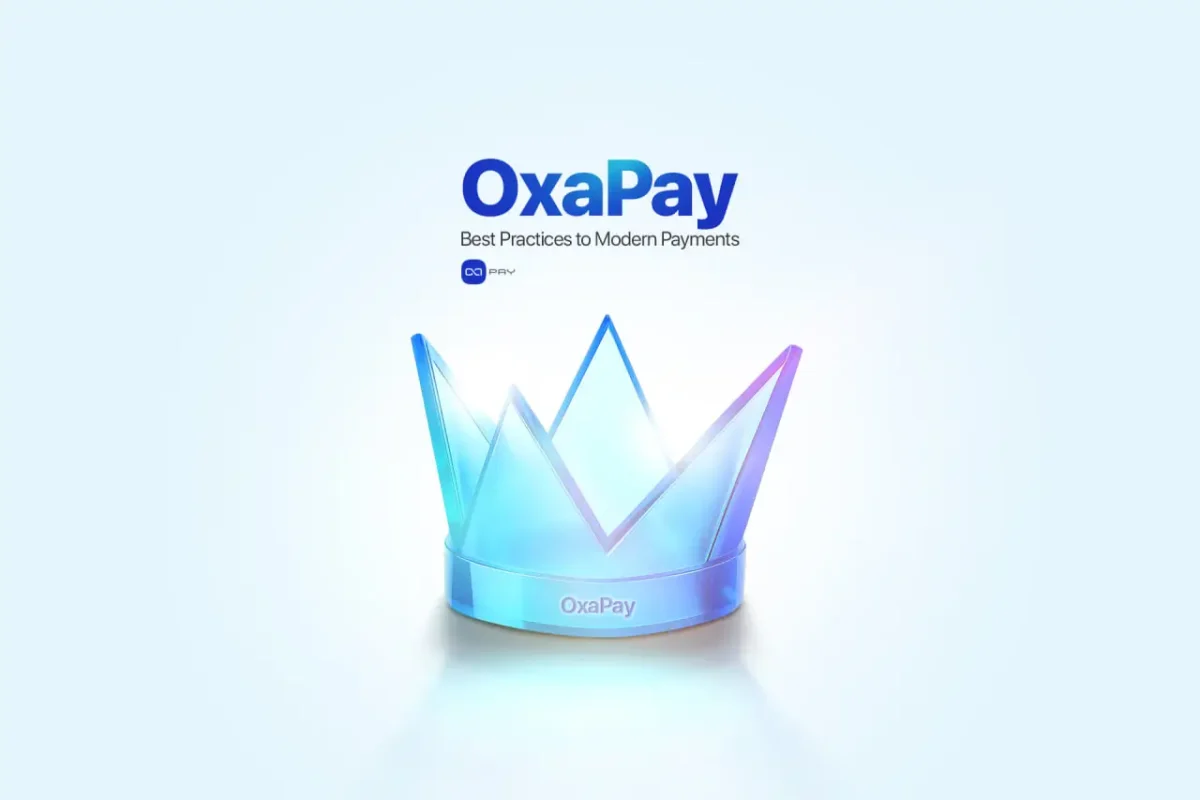
OxaPay : Appliquer les meilleures pratiques aux paiements modernes
Jusqu'à présent, nous avons exposé les principes nécessaires à l'acceptation sécurisée et efficace des paiements en ligne, et examiné leur application aux principales méthodes telles que les cartes, les portefeuilles électroniques, les virements bancaires, le paiement fractionné et les cryptomonnaies. La dernière étape consiste à voir comment… passerelle de paiement crypto moderne peut rassembler toutes ces bonnes pratiques en une seule solution.
C'est ici que OxaPay Elle se distingue. Ce n'est pas simplement un autre processeur de paiements en cryptomonnaie ; c'est une plateforme conçue autour des principes mêmes que nous avons évoqués : sécurité, efficacité, transparence des coûts, évolutivité et flexibilité d'intégration.
La sécurité dès la conception
- Webhooks signés HMAC Empêcher toute falsification des mises à jour de statut de paiement.
- listes blanches d'adresses IP restreindre l'accès aux API sensibles des commerçants.
- Authentification à deux facteurs (2FA) et journaux d'activité Sécuriser les comptes contre toute utilisation non autorisée.
- Chiffrement avancé protège les données de transaction sensibles.
Ces mesures reflètent les mêmes normes que PCI DSS et RGPD, mais appliquées aux paiements natifs en cryptomonnaie.
Efficacité et expérience utilisateur
- Confirmation instantanée du paiement réduit le temps d'attente des confirmations blockchain, offrant ainsi aux commerçants et aux clients une confiance en temps réel dans les transactions.
- Liens de paiement et Boutons de don proposer des options sans code pour les indépendants, les créateurs et les organisations caritatives.
- Point de vente (PDV) permet aux commerçants physiques d'accepter les paiements en ligne en Bitcoin ou Litecoin simplement en affichant un code QR sur un navigateur, sans matériel supplémentaire.
Transparence des coûts
- Frais marchands début à 0,4%, bien inférieur aux processeurs de cartes ou au 2-5% de PayPal.
- Aucuns frais cachés pour l'installation ou la maintenance.
- Les frais liés à la blockchain sont évités lors de l'utilisation de fonctionnalités telles que échanges internes entre les pièces.
En plus des frais naturellement plus bas du Bitcoin, OxaPay garantit que les coûts restent prévisibles et durables pour les entreprises.
Évolutivité et gestion avancée des paiements
- architecture de microservices et Équilibrage de charge intelligent garantir la disponibilité même en cas de forte demande.
- Adresses statiques permettre aux entreprises d'attribuer des adresses permanentes à leurs clients, ce qui est utile pour les paiements récurrents et les abonnements.
- Paiements mixtes Permettre aux clients de régler leurs factures partielles avec une autre cryptomonnaie prise en charge.
- Retrait automatique Transfère automatiquement les fonds vers des portefeuilles externes.
- Conversion automatique en USDT aide les commerçants à stabiliser leurs revenus face à la volatilité.
- Échange manuel sans frais de blockchain permet une plus grande flexibilité dans la gestion de trésorerie.
Options d'intégration
OxaPay propose des solutions d'intégration flexibles pour tous les types d'entreprises souhaitant accepter les paiements en ligne, des indépendants aux grandes entreprises :
- Sans code : Liens de paiement, boutons de don.
- Plugins: WooCommerce, WHMCS, Blesta, PrestaShop, EDD, VirtueMart, Restrict Content Pro.
- PDV : Solution web pour l'acceptation des cryptomonnaies en magasin.
- Services marchands (API) : API de facturation, Marque blanche, API de paiement, Adresses statiques, tous avec Prix en monnaie fiduciaire dans plus de 40 devises.
Avec une seule clé API, les développeurs peuvent s'intégrer en profondeur, tandis que les utilisateurs non techniques peuvent démarrer instantanément grâce aux liens.
Support et documentation
Les paiements sont essentiels à notre activité, c'est pourquoi OxaPay propose un large éventail d'options d'assistance.
- D'abord, Assistance par chat en direct 24h/24 et 7j/7 directement depuis le tableau de bord
- En outre, Assistance par courriel pour les problèmes techniques et commerciaux.
- De plus, Une communauté Telegram pour la communication en temps réel.
- Enfin, Documentation API complète avec exemples pour les développeurs.
✅ En pratique, OxaPay démontre comment les principes des paiements en ligne sécurisés, efficaces et évolutifs peuvent être appliqués au commerce des cryptomonnaies dans le monde réel. Ainsi, les entreprises peuvent accepter le Bitcoin et d'autres cryptomonnaies avec la même confiance et la même fiabilité qu'avec les systèmes traditionnels, tout en bénéficiant d'avantages uniques tels que des frais réduits, des confirmations instantanées et une portée internationale.
Conclusion
Accepter les paiements en ligne de manière sécurisée et efficace n'est plus une option, mais une nécessité pour la croissance dans l'économie numérique actuelle. Par conséquent, les entreprises qui privilégient la sécurité, la transparence, l'évolutivité et l'expérience utilisateur réduisent les risques tout en renforçant la confiance de leurs clients. De plus, des cartes aux cryptomonnaies, les mêmes principes s'appliquent : protéger les données, minimiser les frictions et anticiper la croissance. Enfin, des plateformes comme OxaPay simplifient ce processus en combinant une sécurité de niveau entreprise, des intégrations flexibles et des analyses en temps réel pour aider les entreprises à accepter les paiements en toute sérénité.
Appel à l'action
Sécurisez vos paiements pour l'avenir dès aujourd'hui, commencez par Inscription gratuite à OxaPay et découvrez des outils sécurisés et performants conçus pour la croissance.
